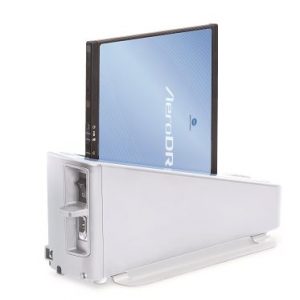
The Clinic has upgraded to the AeroDR wireless digital radiography system, above, where patient information and images appear on one plate.
Ron McCrae has seen all three generations of radiography image creation in his career, the last two occurring recently.
“In the span of the last 10 years,” the manager of The Corvallis Clinic Imaging Department said, “we’ve had two evolvements to replace capturing images on film, which is how we were doing it for about the previous 100 years.”
In 2008, The Clinic moved from film to the digital process of computed radiography, or CR. Three months ago, it began using the most advanced technology in “filmless radiology” – direct-capture radiography, or DR.
In the CR system, the technologist had to ID and use separate plates for every image. The technologist then took the plates to a hardware unit where the images were produced before being sent into an archiving system for the radiologist to read.
Now, with DR, images are produced in a matter of seconds on a single 14 x 17 inch panel. “All the hardware disappeared,” McCrae said. “The patient’s information is automatically loaded into the system.”
The new DR system is geared toward maximum patient convenience and safety. The DR reduces the patient’s appointment time in half, McCrae said, the speed coming from not having to use separate plates for every image. He said the improved safety comes from the images being produced in a few seconds, reducing the radiation dose patients receive by half compared to the older CR tools, which already had very low exposure levels.
McCrae also said the DR produces higher quality images, which makes image defects less likely, reducing the need for repeat scans.
The Clinic has seven plates in all, five at the Imaging Department in the Asbury Building in Corvallis, and one each at Philomath Family Medicine and at Waverly Drive in Albany.
“The simplicity is deceiving,” McCrae said of DR technology. “It’s all electronic, with no moving parts and nothing to really wear out. The first DR system had cables, which was very awkward. Now it’s wireless, with receivers located in the ceiling. The system has evolved to a level where I expect it to stay for a while.”
McCrae said The Clinic Board of Directors and Administration were forward thinking in purchasing the new technology at this time. “The cost had gone down about 70 percent from when I last sought a bid about four years ago,” he said. “And with the cost of keeping the old CR system updated factored in – along with the government’s new policies on x-rays – the board decided it was a good time to make the change.”
